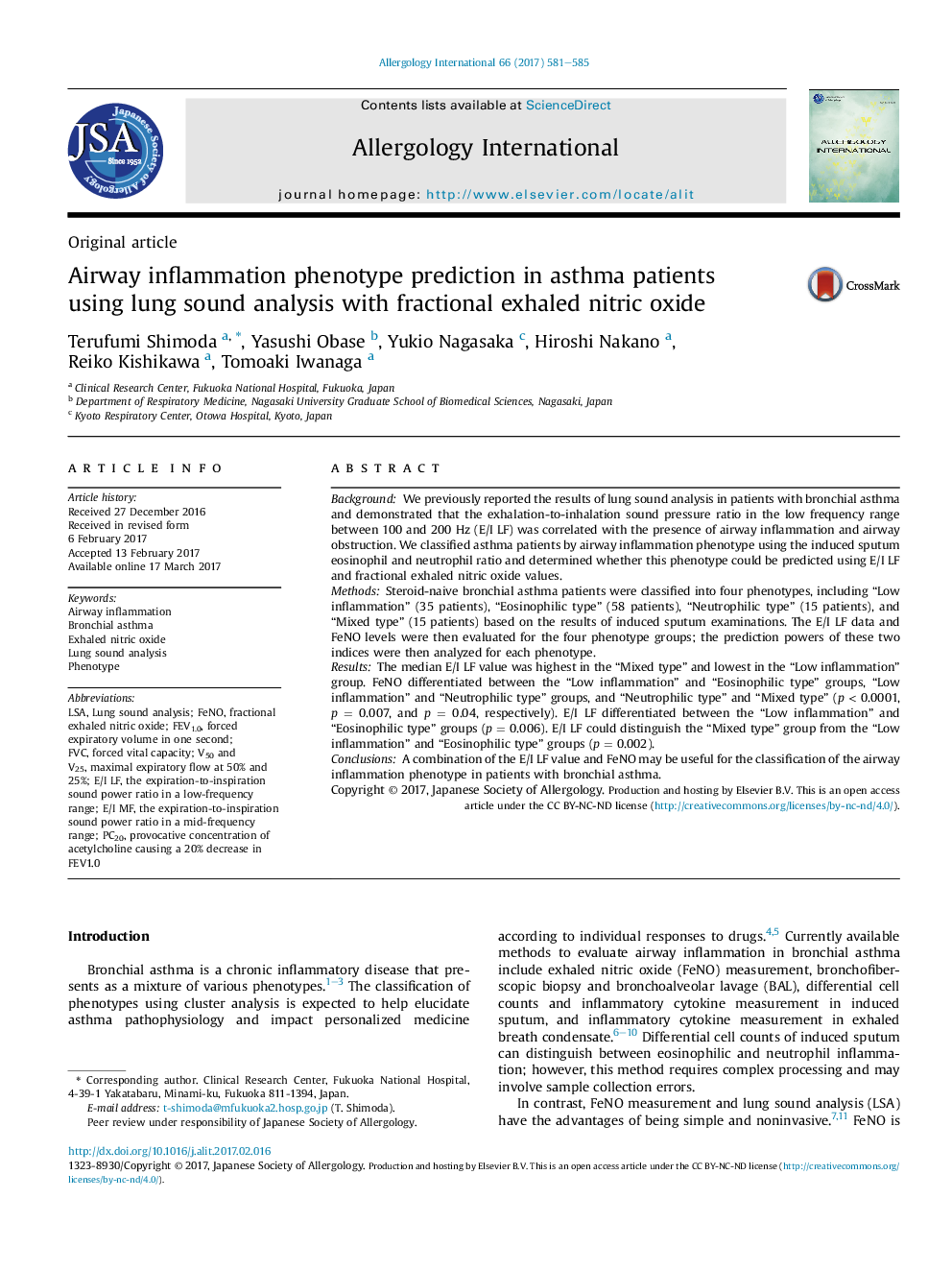| Article ID | Journal | Published Year | Pages | File Type |
|---|---|---|---|---|
| 5665150 | Allergology International | 2017 | 5 Pages |
BackgroundWe previously reported the results of lung sound analysis in patients with bronchial asthma and demonstrated that the exhalation-to-inhalation sound pressure ratio in the low frequency range between 100 and 200 Hz (E/I LF) was correlated with the presence of airway inflammation and airway obstruction. We classified asthma patients by airway inflammation phenotype using the induced sputum eosinophil and neutrophil ratio and determined whether this phenotype could be predicted using E/I LF and fractional exhaled nitric oxide values.MethodsSteroid-naive bronchial asthma patients were classified into four phenotypes, including “Low inflammation” (35 patients), “Eosinophilic type” (58 patients), “Neutrophilic type” (15 patients), and “Mixed type” (15 patients) based on the results of induced sputum examinations. The E/I LF data and FeNO levels were then evaluated for the four phenotype groups; the prediction powers of these two indices were then analyzed for each phenotype.ResultsThe median E/I LF value was highest in the “Mixed type” and lowest in the “Low inflammation” group. FeNO differentiated between the “Low inflammation” and “Eosinophilic type” groups, “Low inflammation” and “Neutrophilic type” groups, and “Neutrophilic type” and “Mixed type” (p < 0.0001, p = 0.007, and p = 0.04, respectively). E/I LF differentiated between the “Low inflammation” and “Eosinophilic type” groups (p = 0.006). E/I LF could distinguish the “Mixed type” group from the “Low inflammation” and “Eosinophilic type” groups (p = 0.002).ConclusionsA combination of the E/I LF value and FeNO may be useful for the classification of the airway inflammation phenotype in patients with bronchial asthma.
